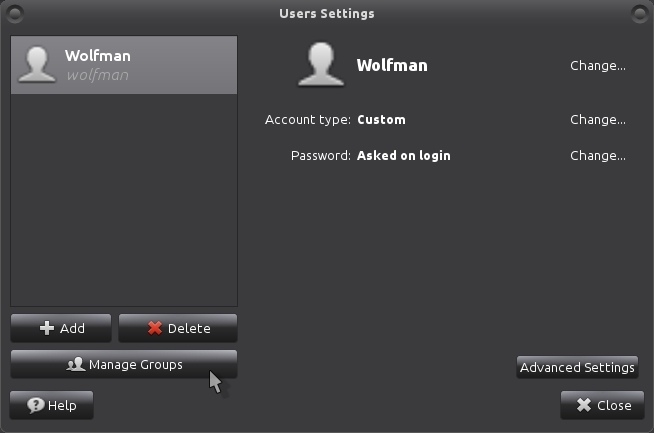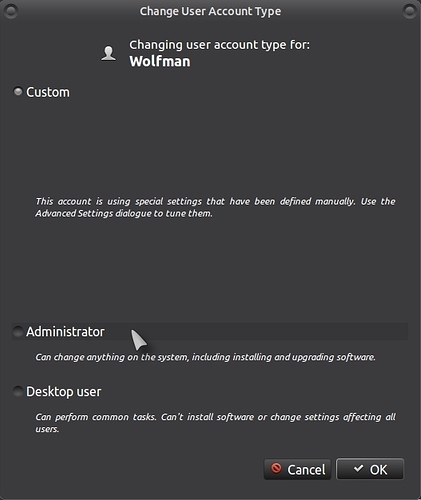I was looking at users & Groups and added a user. This user came up as custom so I changed to desktop user. Then I noticed the first login ID was also set as custom and not as administrator and then wondered if I should have left the added ID as custom? What is the difference between custom and others?
Hi Don,
when you set up your Ubuntu; the username you first choose is also the system administrator even though it states "Custom", if you add another username, it changes to a custom user but the original username is still the administrator unless you change it!. You can still have a custom account and also be admin at the same time, I know it is a little confusing but that's the way it is!.
If you intend to use more than one name, set the original username to "Administrator" and the other (2nd user) to "Desktop user":
See this link for more info on Users & Groups which might help or post back if you have more questions:
I hope it helps!. 
@wolfman I looked it over quickly and it does help but will have to look over in greater detail later to better understand it. Thanks for your help.
Hi Don,
I forgot to mention, if you do create a desktop user, you would need to make sure what type of access they would have to the system by managing the groups the user is allowed to use!:

@wolfman I need to look into this further! I deleted the extra user I had added before and then added back and left it as CUSTOM. Looked at advanced settings and there was nothing checked but the user ID was 1001. Obviously this does not tell the whole story as far as privileges go so now I am more confused than ever. Perhaps I am trying to go too deep too soon!
In a nutshell, the ID is simply a unique number for that user, mainly used for determining permissions on files/folders.
0- root.1000- default user.999- live session user.
Services ran on the system have their own too:
33- www-data (Apache Server)104- syslog112- pulse (Audio Daemon)120- lightdm (Display Manager)
It's one reason why my ext4 formatted external hard drive is owned by me (1000) but when I plug it in to a live session, I get a "You do not have permission" message.
You can use this command to find the ID of a user:
id -u <user>
So really, it doesn't matter what the ID is set to, as long as it doesn't interfere with an existing ID.
Here is a good read for you @Don_in_Vermont (A tad old but quite good!) 
Thanks for all your help. Great Community.
